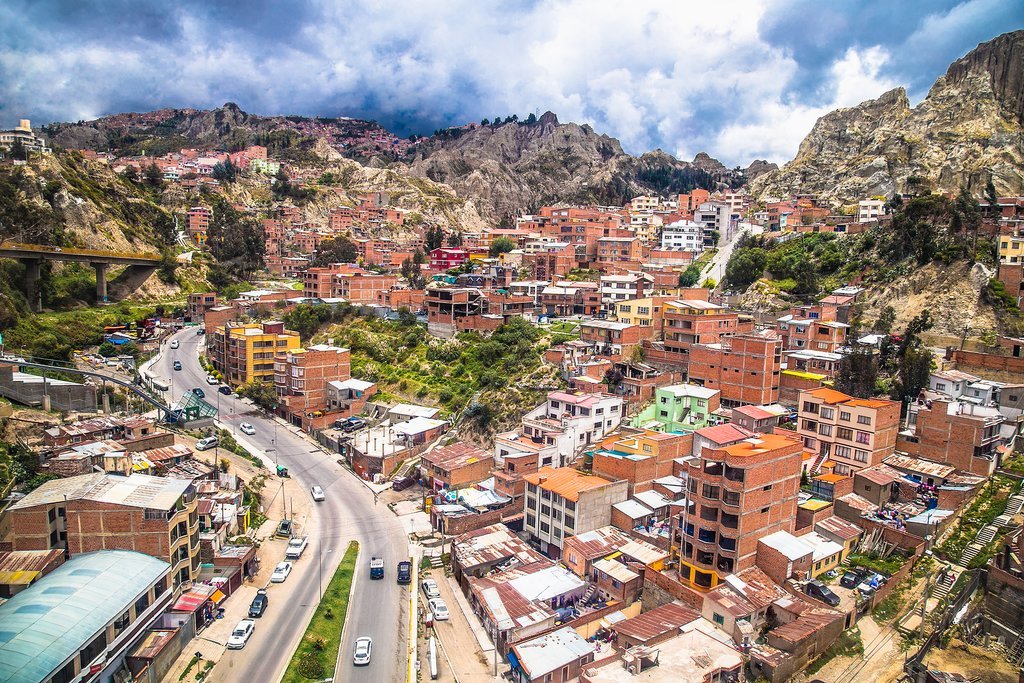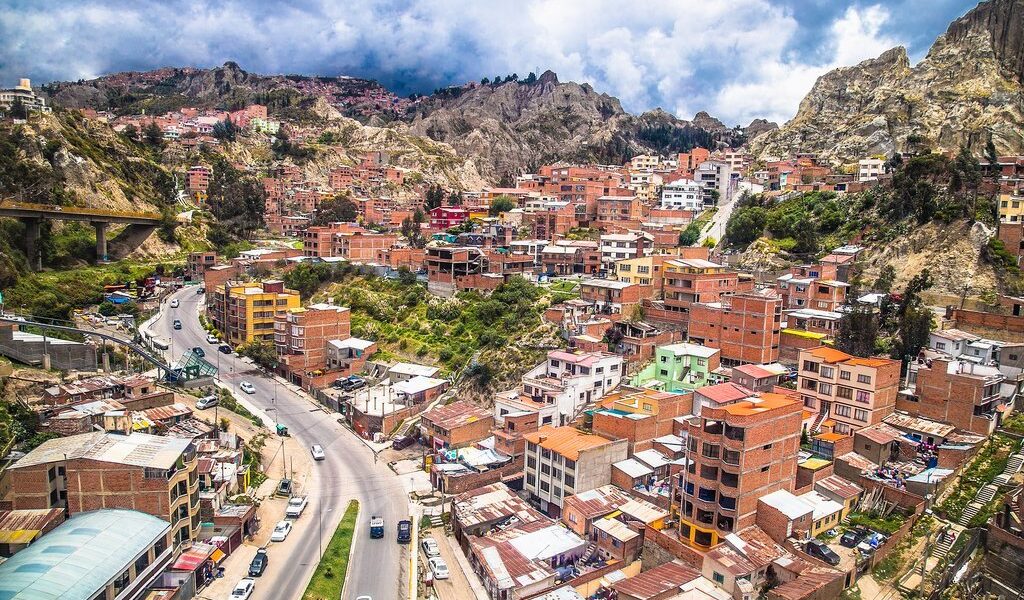
It might still be a wash-out of a month in much of Bolivia, with rain especially heavy in the Amazon, but it’s slowly drying up in the Andes and savanna. Sun is definitely on the horizon, if not already here in places, with average daily temperatures in much of the savanna only a degree or two off their annual highs. It’s an important time for harvesting coca (in the Andes and parts of the Amazon), and grapes (in the savanna)—plus, there’s something to celebrate! Carnival can also fall at the beginning of March, as can Holy Week.
Weather in Bolivia During March
Bolivia, a captivating nation nestled in the heart of South America, mirrors the continent’s diversity with its varied geographical zones, each boasting a unique and distinct climate. This captivating land is broadly divided into three primary regions: the majestic, high-altitude Andes in the west, sharing climatic similarities with the Andean region of Peru; the verdant, hot, and humid rainforest flourishing in the north; and the expansive savanna region that occupies the south and east, largely defined by the vast expanse of the Gran Chaco, predominantly a semi-arid area with sparse tree cover.
The Andean Climate
La Paz, the vibrant administrative capital, provides a representative snapshot of the Andean climate as a whole. Currently, it is experiencing drier conditions compared to any month since November in La Paz. However, even now, an average of 2.8 inches or 70mm of precipitation is expected, making it relatively wet compared to other times of the year in this region. The temperatures remain cool, ranging between 37-55°F or 3-13°C, and the region experiences fewer daily hours of sunshine, with an average of just five hours in March. Visitors should anticipate chilly conditions and prepare accordingly.
The Rainforest Climate
Cobija, situated in the far northern reaches of Bolivia near the Brazilian border, serves as an example of the climatic conditions prevalent in the rainforest region. This area is characterized by consistently high rainfall, with an average of 9.3 inches or 235mm expected this month. Sunshine hours remain low, mirroring the previous two months, with an average of six hours daily, the joint-lowest level of the year. The average temperature range in Cobija during this period is 70-88°F or 21-31°C. Humidity is also typically high, and visitors should pack accordingly.
The Savanna Climate
Santa Cruz, the bustling commercial hub, offers a good indication of the weather patterns experienced in the savanna region. The encouraging news is that rainfall is significantly decreasing this month, with only 4.7 inches or 120mm expected. The region enjoys a steady seven hours of sunshine daily, a pleasant contrast to the Andean region, which receives two fewer hours of sunlight. These sunny conditions are favorable for a variety of outdoor activities and make the savanna region an attractive destination during this time of year.
Crowds and Costs in March
March is generally considered a shoulder season in Bolivia, meaning you won’t encounter overwhelming crowds of tourists. The weather in both the Andes and the Amazon regions is still not ideal enough to attract a massive influx of visitors. This presents an opportunity for travelers to negotiate deals on hotels and tours, as businesses are often eager to attract customers during this period. It’s worth remembering that prices in Bolivia are generally very reasonable, which enhances its appeal as a budget-friendly travel destination. You can find high-quality accommodation and tours without breaking the bank.
Recommended Destinations in March
Exploring the Andes
The major cities of La Paz and Sucre are fantastic destinations to spend time in during March, despite the weather conditions in La Paz being less than ideal, with limited sunshine and a fair amount of rain. However, the capital city offers a wealth of indoor activities to captivate visitors. The museums provide an excellent starting point, with the Ethnography Museum, the Coca Museum, and the Plaza Museum of Contemporary Art all offering enriching insights into Bolivia’s vibrant and dynamic culture. Immerse yourself in the country’s history, art, and traditions through these fascinating exhibitions. Furthermore, the city’s culinary scene has gained significant recognition, with some restaurants, such as Gustu, boasting Michelin-starred chefs. Savor the flavors of Andean cuisine and indulge in unforgettable gastronomic experiences.
If you desire a simpler culinary experience, a great way to combat the cold, satisfy your appetite, and gain a glimpse into local life is to sample the delicious street food snack known as the salteña. These savory pastries are available at stands throughout La Paz and offer a flavorful taste of Bolivian street food culture. Also, be sure to explore the intriguing markets in La Paz, such as the Mercado de las Brujas (Witches Market). Wander through the stalls filled with mystical items, traditional remedies, and fascinating cultural artifacts.
Sucre, blessed with balmier weather conditions, offers several captivating colonial buildings to explore. The famous Casa de la Libertad, where Bolivia’s Declaration of Independence was signed, is a must-see historical landmark. If your visit coincides with carnival season, Oruro is the place to be for vibrant and spectacular celebrations. Immerse yourself in the lively atmosphere, colorful costumes, and traditional music of this renowned carnival.
Venturing into the Rainforest
While the weather in the rainforest is gradually improving, wildlife remains somewhat reluctant to emerge due to the heavy rainfall. Road travel can be challenging, with muddy conditions and potential flooding. It is recommended to focus on the larger cities in the region, such as Trinidad or Rurrenabaque, and then, if weather conditions permit, venture out onto the jungle rivers, like the Beni, for wildlife spotting opportunities. Discover the diverse array of flora and fauna that inhabit this lush ecosystem. A boat trip along the river allows you to observe monkeys, birds, and various other fascinating creatures in their natural habitat.
Experiencing the Savanna
For yet another month, the savanna region stands out as the prime destination in Bolivia. Santa Cruz, the region’s largest and most dynamic city, hosts one of the country’s most impressive carnivals, which sometimes extends into March. Experience the infectious energy, dazzling costumes, and pulsating music of this vibrant celebration. Tarija is another enticing destination to consider, as it hosts the Fiesta de la Uva (Grape Festival and harvest). This joyous event celebrates the region’s grape harvest and offers opportunities to indulge in wine-tasting and traditional festivities. Furthermore, a journey into the Valle de la Concepción, where Bolivia’s finest wineries are located, is an especially enriching experience during the grape harvest.
Chat with a local specialist who can help organize your trip.
Engaging Activities in Bolivia
Andes Activities
The continued wet weather in the Andes provides ideal conditions for certain activities, particularly white water rafting. Coroico and the North Yungas region, situated northeast of La Paz on the Río Coroico, are popular destinations for this thrilling adventure. Experience the adrenaline rush as you navigate the rapids amidst stunning natural scenery. Back in La Paz, indulge in a gourmet Andean dining experience at one of the city’s acclaimed restaurants. Explore the diverse flavors of local cuisine and savor expertly prepared dishes. Alternatively, immerse yourself in culture by perusing a museum or browsing a vibrant market. Just outside La Paz, among the numerous activities available, consider visiting a coca farm, where coca is now being harvested. Learn about the cultivation and uses of this important plant in Bolivian culture.
Rainforest Activities
As previously mentioned, this is not the optimal month for an extensive rainforest excursion. Even if you encounter dry days during your visit, past rainfall will likely have rendered road travel more challenging. The primary drawback is that the abundance of wildlife that emerges from the following month is not yet fully visible. While you will still encounter some animals, the density and diversity will be significantly lower. However, a boat trip along a jungle river departing from Trinidad and Rurrenabaque can still be a thoroughly enjoyable experience, offering glimpses of the rainforest’s beauty and tranquility.
Savanna Activities
Participating in a celebratory event might be the perfect way to commence your vacation in the savanna during March. It is not only the large city of Santa Cruz that has been reveling recently, but also the celebratory atmosphere permeates Tarija with the Fiesta de la Uva (Grape Festival) and Tarabuco with Pukllay. If you do not have the opportunity in Tarija, consider embarking on a wine-tasting experience in the Valle de la Concepción. Surprisingly close to Santa Cruz, and an absolute must-do if the rain holds off, is the captivating Amboró National Park, regarded as one of Bolivia’s finest national parks. Although predominantly a jungle environment, it offers more favorable weather conditions for outdoor activities compared to the rainforest in northern Bolivia, along with a number of enticing walking trails.
Notable Events in March
Carnaval, celebrated in Oruro and Santa Cruz. As in many Latin American nations, Carnaval is a grand celebration in Bolivia as well. The most significant festivities occur in the cities of Oruro and Santa Cruz, featuring elaborate parades, live music, colorful costumes, and exuberant street parties.
Fiesta de la Uva, taking place in Tarija. This is the season of the annual grape harvest, encompassing celebrations of the grapes themselves, wine, and spirits derived from grapes, in addition to the crucial activity of grape-picking.
Pukllay/Phujllay, held in Tarabuco. This annual festival, taking place in Tarabuco, Chuquisaca, commemorates the victory of local indigenous tribes over the Spanish forces in 1816. It stands out as one of the most visually striking and culturally significant celebrations in Bolivia.
Semana Santa, celebrated nationwide. Holy week, mirroring the traditions observed in other Latin American nations, may fall in March. It is celebrated throughout Bolivia with religious processions, festive gatherings, and street vendors offering an array of delicious food.
Considering a Trip to Bolivia in March? Explore these Recommended Itineraries
La Paz City Adventure – 5 Days. Embark on an exploration of the cultural treasures of the highest capital city on Earth, from refined Andean cuisine and a thrilling cable car ride offering panoramic city views to the nearby Unesco World Heritage Site of Tiwanaku.
Bolivian Landscapes, Cultures & Communities: Cochabamba, Torotoro, Uyuni, La Paz & More – 14 Days. Immerse yourself in a two-week journey through some of Bolivia’s most remarkable cultural experiences, from the laid-back charm of Samiapata and the cosmopolitan ambiance of Sucre to adventurous canyon treks and the surreal salt flats of Salar de Uyuni. Of course, do not forget the thriving and captivating capital city of La Paz itself.
Additional Resources
Bolivia in February
Bolivia in April
Best Time of Year to Visit Bolivia
How Many Days to Spend in Bolivia
B-185

